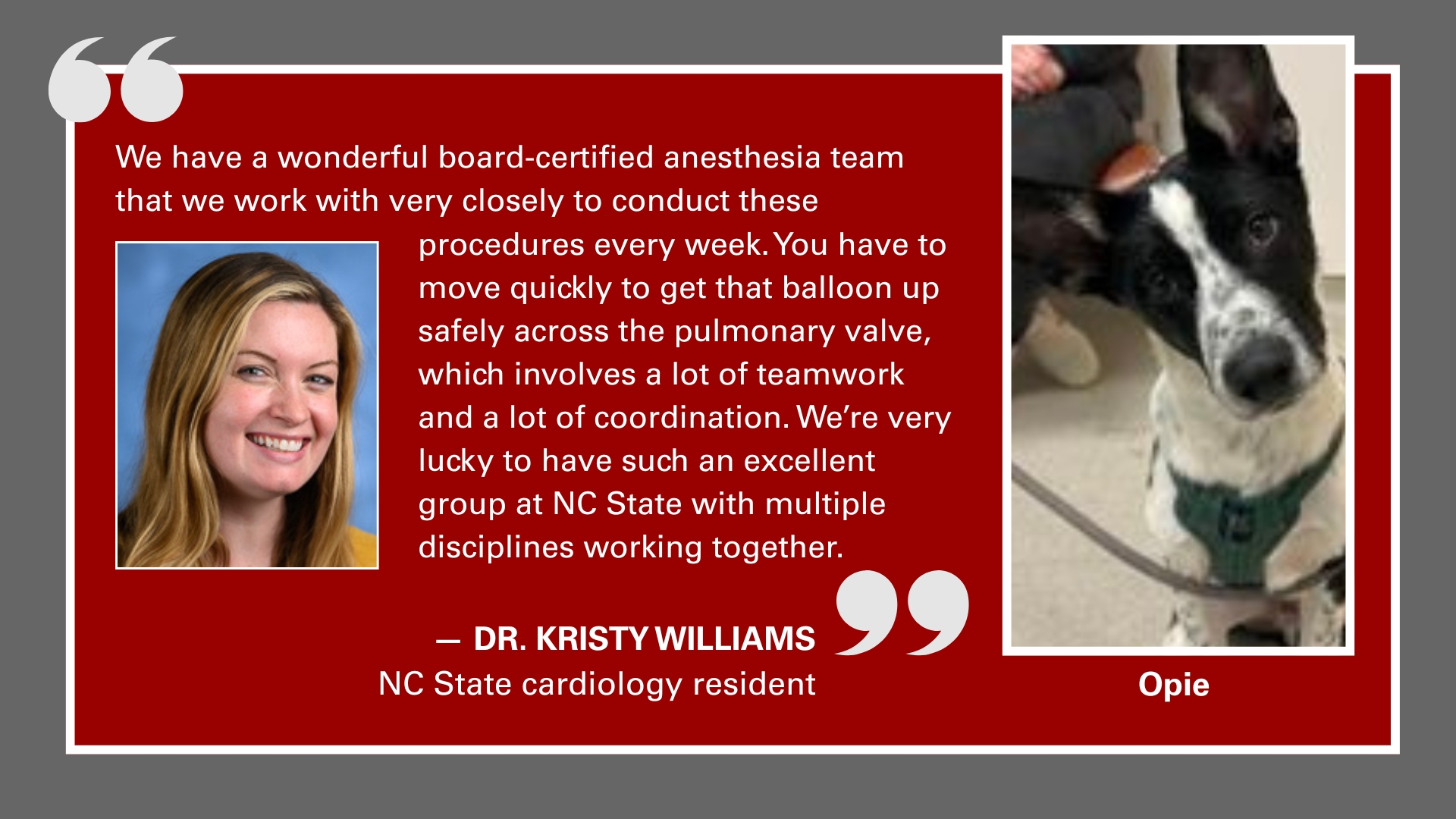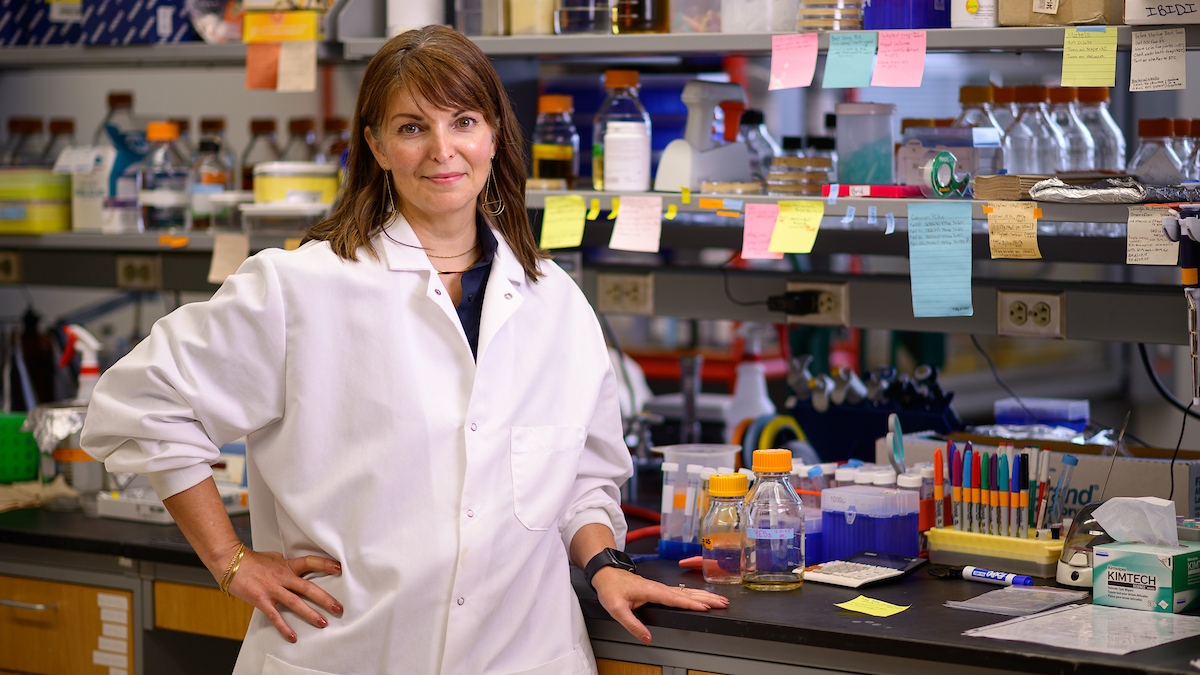Veterinary Practice News Profiles Dr. Lysa Posner
The following profile of Dr. Lysa Posner is reproduced from the “Profiles in Medicine” feature written by contributing editor Marissa Heflin for the August 2012 issue of Veterinary Practice News.
As an associate professor of anesthesiology at North Carolina State University College of Veterinary Medicine, Lysa Posner, DVM, Dipl. ACVA, is used to giving lectures and teaching students about what she knows best: veterinary anesthesiology. In fact, about 25 percent of her job is spent in lecture halls.
While other aspects of her job—overseeing anesthetized animals in the teaching hospital and being involved in anesthesia-related research—keep Dr. Posner busy, she still finds time to speak at two national veterinary conferences a year and to various state organizations.
 Lysa Posner, DVM, Dipl. ACVA |
Lecture topics vary year to year, but a hot topic of late has been analgesia, she says. Most veterinarians are trained in only one or two ways to stop pain, which are good ways, Posner says, but there are a lot more methods that can be used.
“You have to separate anesthesia, which makes you unconscious, from interrupting the pain pathway,” she notes.
For example, she says, “If I just make you sleep and hit you on the toe with a hammer, you won’t feel it while you are asleep but the minute you wake up you will, because that whole pathway is activated.
“If I can stop that pathway when you wake up from anesthesia, you’re going to be in a whole lot less pain,” she adds. “That’s always my goal, to stop [pain] or attenuate it before that patient wakes up.”
[section_subtitle] Drawn to Veterinary Medicine [/section_subtitle]
Becoming a veterinarian always felt like it was the right path to take, Posner says.
“It was the idea that I could mix the science with the animals,” she says.
The “people part” also enticed Posner.
“I think the biggest misconception is that veterinarians don’t like people,” she says. “Every animal, regardless of [species], comes with someone who loves it, wants something from it or uses it. They are connected and that works for me.”
After graduating from Cornell University College of Veterinary Medicine in 1992, Posner spent almost 10 years in private practice. She was then up for another challenge, she says.
“Anesthesia was the only specialty that really called me,” she says, adding that she was drawn to the idea of working with multiple species.
She completed her anesthesia residency at Cornell in 2001.
Posner believes her time in private practice helps her connect with other veterinarians when she speaks at various conferences.
“I have an advantage because I know what it’s like to sit in their seat,” she says. “I know what they are trying to get out of a lecture. I have insight into what kind of information is going to benefit them, what kind of information they can take back to their practices or their daily life and use.”
In fact, Posner was named Equine Speaker of the Year at the North American Veterinary Conference this past January. Posner is especially proud of the award because she was nominated for it by the attendees.
“That means I reached the people I was trying to reach,” she says.
Cliff Swanson, DVM, Dipl. ACVA, describes Posner as an “exemplary academician and colleague.”
Dr. Swanson is an associate professor of anesthesiology and assistant department head of the Department of Molecular Biomedical Sciences at North Carolina State University College of Veterinary Medicine.
“Dr. Posner is a bright, inquisitive, enthusiastic and gregarious person who brightens a room easily with good humor and a hearty laugh,” Swanson says. “She is a thoughtful, honest and frank communicator and is passionate about teaching and learning.”
[section_subtitle] Down the Road [/section_subtitle]
What does the future hold? Posner expects to still be at a university.
“I really enjoy it here,” she says. “I like the constant discussion and curiosity.”
She also hopes to find answers through her work in research. For instance, Posner is studying pain relief in frogs and fish, an area that hasn’t been extensively explored, she says.
She would also like to shed more light on analgesia.
“I would challenge them, especially if they are treating companion animals,” she says. “This is a place where most owners are willing to spend money.”Posner says she hears a lot from practitioners that they don’t incorporate as much analgesia because they don’t think it is cost efficient.
Posner says many veterinarians have decided that people don’t want to pay for it, when, in fact, she has found the opposite to be true.
Owners of large animals and even production animals are no exception, she says. For example, cows in pain produce less milk. The increase in production pays for the analgesia, according to Posner.
“It works all around,” she says. “The cow is happy, the farmer is happy, I’m happy.”
Posner says she’d also like to see the veterinary profession talk more about how pain decreases healing. Research backs this up, she says.
“People and animals in pain heal more slowly,” she says. “It’s not just about ‘Does it hurt?’ It’s also about all of the physiological things that happen when you leave animals or even people in pain. This has been proved over and over and over again. People in pain actually stay longer in the hospital.”
Just because patients aren’t crying doesn’t mean veterinarians shouldn’t minimize their pain as much as possible, Posner adds.
“If you put [that all together], then why aren’t we doing it?” she asks.


